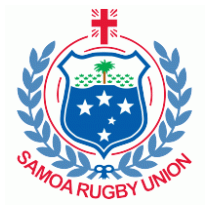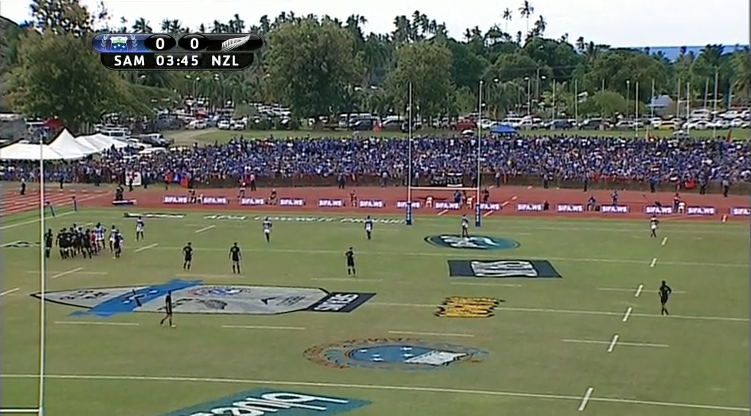
 PHILADELPHIA, PA – Ahead of the opening round of the Pacific Nations Cup and the US Eagles’ match against Samoa, I went back and watched some recent Samoan matches to try and see where their strengths are in attack. Here are some thoughts.
PHILADELPHIA, PA – Ahead of the opening round of the Pacific Nations Cup and the US Eagles’ match against Samoa, I went back and watched some recent Samoan matches to try and see where their strengths are in attack. Here are some thoughts.
Samoa is resting many big name players, but they are still bringing a number of squad members who were key to their 2014 matches. In terms of their patterns in attack, the most important player being rested is fly half Tusi Pisi. Even with that absence, Samoa are likely to look to run the same patterns like they did against Canada in November when Mike Stanley started at 10.
Relative to the Eagles, their attack is more varied from match to match. Because of this, there is not one category of data that seems to tie things together.
The lineout is a potentially useful tool for the Samoans, but unreliable. For instance, against Canada, Italy, and England, Samoa won 23 lineouts from 34 chances. That is 68%. But when it works, like against Fiji last summer, they are ready to use it. They mauled against Fiji and generated pressure and points in a game Samoa won without scoring a try.
Against the Eagles, it seems likely they will get a try, but it could come from almost anywhere, any kind of situation.
One of the things that surprised me was how often Samoa kick in attack. Against Tonga, they had clean ball from a scrum and kicked from the first phase. This kick did not go to plan.
From a clean scrum against Canada, the 8 pops to 9 (something that is not unusual for Samoa), and it is the 9 who puts the kick through. This one does not go well either.
The move above is important in part because it is close to an ideal attacking scenario. A scrum 15 meters in from touch on your attacking 10 meter line! Everything is in play and anything could be run. What Samoa chose to do in that situation against an opponent of comparable strength to the Eagles seems telling.
This next scrum move shows Samoa gaining territory. The ball goes left from a central scrum. 10 loops 12 while 13 runs hard and helps clear some space. The pass goes behind 13 to the wing who gets over the gainline. Phase 2 involves a pair of forwards working together. Two more tight phases and then the kick for the winger to chase.
Another aspect of the Samoan attack the Eagles’ defense will need to react well to is second line runners.
Here is a move from a lineout where the weak side wing is the first receiver, 12 runs a decoy line, and the fly half then receives the pass with time and space to make a big pass. When the 10 gets the pass, the centers are drifting across the field, not charging up. The winger knocks the ball on, but the move had promise.
Here is the same move against Tonga. Tusi Pisi skips the 13, which is too bad because he seems in a good position to beat his marker.
They are still using this move. Here they are setting up to run the move against the All Blacks. The man behind the scrum is the weak side winger.

The All Blacks are ready for the move and the 13, Ryan Crotty, commits early to his opposite, and the other center, Sonny Bill Williams is quick to the breakdown to force the turnover.
If the Eagles see this set up this weekend, they need the same kind of reaction.
Even when not operating from a set piece, Samoa is looking to use the second line of runners. Flanker Jack Lam here passes behind two other forwards to the fly half. The move did not get over the gainline, but does show the side’s capacity to test defensive lines.
In this move against Italy, it was a prop passing behind other forwards.
In the examples above, the defensive lines are largely ready for the pass behind. The Samoan attack relies on defenders being worried about getting run over. In the example against Italy, the prop generates no fear because he immediately swivels to pass when he receives the ball. There are, though, 3 players to whom he might pass, but he chooses the one drifting sideways who is easily tackled.
Good tackling of big runners reduces the threat considerably and can contribute to aimless moves like the one above.
From the lineout, when Samoa do go off the top, a pass straight to the inside center is likely.
Against the All Blacks, the same move was used from a 5-man lineout. The ball was not pristine off the top, but it got to the 9 all the same. After the crash, Samoa keep working away from the lineout. There is a miss pass in Phase 2. Phase 3 is a pass to a forward who has a partner. He doesn’t make the pass and is easily tackled. Samoa are lucky to win the penalty at that breakdown. Under advantage, they keep working the same direction. It looks to be Jack Lam, again, making the pass to the 10 behind two forwards offering themselves as runners.
A note about the above: Against Italy, there were several instances of the Samoan forwards running in pairs. The idea seemed to be to get more than one defender to commit to the ball carrier before making a little pop pass. If the defenders don’t commit, the ball carrier steam rolls the lone defender putting the team on the front foot. It seems likely that they will look to work in pairs like this against the Eagles. That is my bet, anyway.
Of course, Samoa have the capacity to counter. It seems like part of the reason Samoa kick in attack is that they are hoping to be kicked to.
In this example, Tua Ottoa gets past the Tongan kick-chase with ease.
Finally, Samoa also seem to fall into ruts at restarts. Knowing that, and knowing that the deepest rut is the deep restart, it will be interesting to see if the Eagles are happy to clear to touch and compete at the lineout or whether they try to run from deep.
It isn’t a unique or original observation, but much about how the match goes will depend on how the Eagles tackle.
Feel free to comment below, look for and “Like” our Facebook Rugby Wrap Up Page and follow us on Twitter@: RugbyWrapUp, Junoir Blaber, James Harrington, Jamie Wall, Nick Hall, DJ Eberle, Jake Frechette, Scheenagh Harrington, Jamie Loyd, Cody Kuxmann, Karen Ritter, Audrey Youn, Akweley Okine, Rocky Brown and Declan Yeats, respectively.

